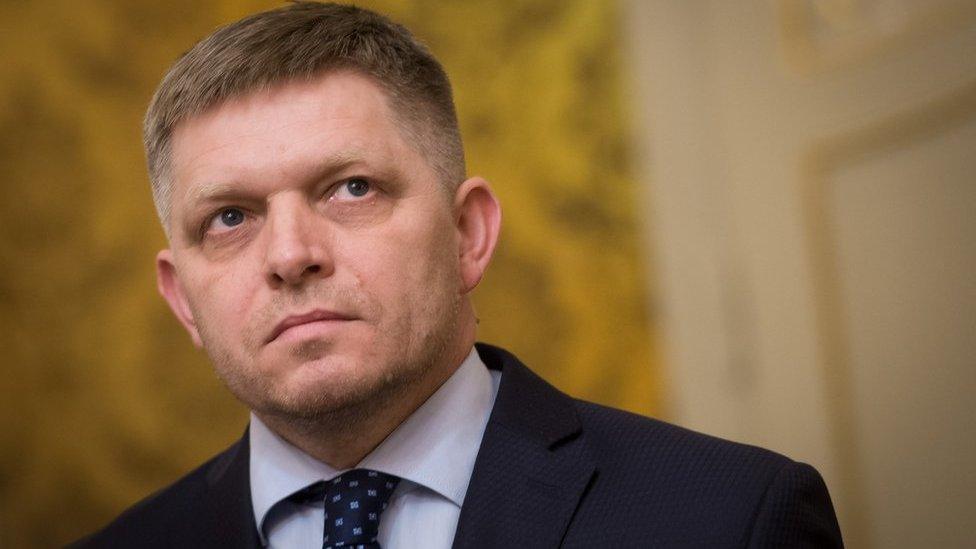Slovenia, Slovakia, and the constant confusion between the two
- Published
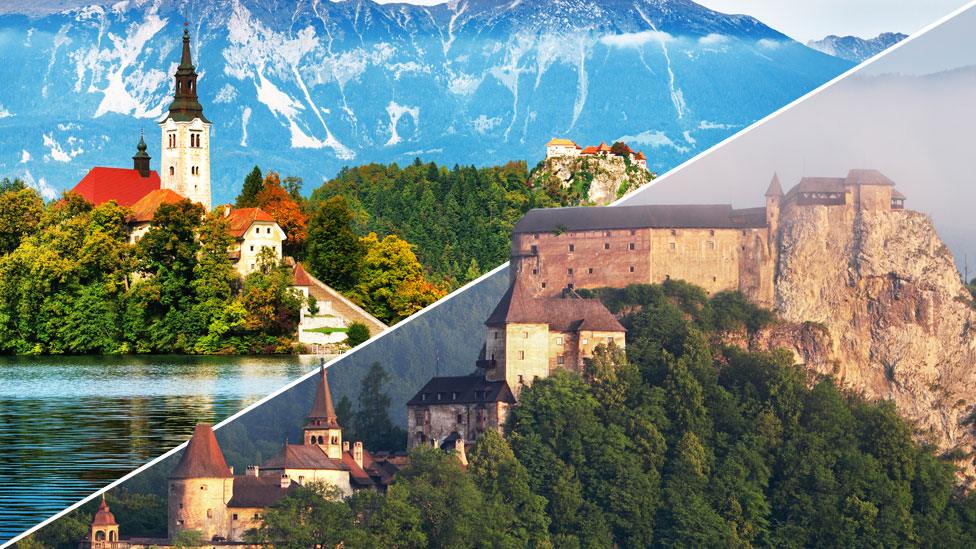
Slovenia's Prime Minister announced his resignation this week.
Slovakia's Prime Minister announced his resignation this week.
If you missed the difference between those two statements the first time you read them, you're not alone.
Slovakia's Prime Minister Robert Fico quit over a scandal following the murder of a journalist investigating government corruption. Slovenia's leader Miro Cerar - completely independently - resigned after a court ruling struck down a massive railway project.
Allow X content?
This article contains content provided by X. We ask for your permission before anything is loaded, as they may be using cookies and other technologies. You may want to read X’s cookie policy, external and privacy policy, external before accepting. To view this content choose ‘accept and continue’.
Allow X content?
This article contains content provided by X. We ask for your permission before anything is loaded, as they may be using cookies and other technologies. You may want to read X’s cookie policy, external and privacy policy, external before accepting. To view this content choose ‘accept and continue’.
But the two European nations have been plagued by confusion about their identities ever since their creation in the 1990s.
Anthem errors
A quick search on Google will uncover dozens of tweets about US First Lady Melania Trump's Slovakian heritage - which doesn't exist. She was born in Sevnica, a Slovenian town (the president's ex-wife, Ivana, was born in Czechoslovakia, but we'll get there).
A curse on both nations, though, is that the wrong flag or the wrong anthem has appeared at many events. Last year, it was the Ice Hockey World Championships in Germany, where angry Slovaks were forced to drown out the Slovenian anthem with boos and whistles.
They were later told their anthem wouldn't be played due to "technical problems".
And the confusion is nothing new. George W Bush famously once talked about his meeting with the Slovak foreign minister - a meeting which never happened. In 2003, Italian Prime Minister Silvio Berlusconi introduced the prime minister of Slovakia at a press conference. It was Anton Rop - from Slovenia.
"It was very strange, we asked journalists not to mention it in their reports," Mr Rop later said.
It's such a common occurrence that The New Yorker magazine reported on an event last year staged by the two London embassies, external, titled: "Distinguish Slovenia and Slovakia".
And one popular myth - perpetuated by the BBC's own QI quiz show - is that the Washington embassies meet up to swap their misaddressed mail once a month.
Allow X content?
This article contains content provided by X. We ask for your permission before anything is loaded, as they may be using cookies and other technologies. You may want to read X’s cookie policy, external and privacy policy, external before accepting. To view this content choose ‘accept and continue’.
That is not quite true, but has its root in a 2004 comment to the New York Times from an anonymous Slovenian ambassador, external somewhere in Europe.
So where does all this confusion stem from?
What's in a name?
The two countries have similar names, similar flags, and a similar history.
The flags, first of all, are nearly identical - made up of horizontal stripes of red, blue, and white. The key difference is the crest - which, helpfully, is positioned on the left in both.
The similarities extend to names, too, for both republics - Slovakia calls itself Slovenská republika, while Slovenia is Republika Slovenija.
The languages are even harder to distinguish in their native tongues - one is slovenčina, the other slovenščina.
But the two countries are not even neighbours.
They are separated from one another by Austria and Hungary, and have distinct features.
Slovenia is a coastal country bordering Italy and Croatia in the south of Europe. But Slovakia has Poland and the Czech Republic as its neighbours, and boasts castles and mountains as its tourist spots.
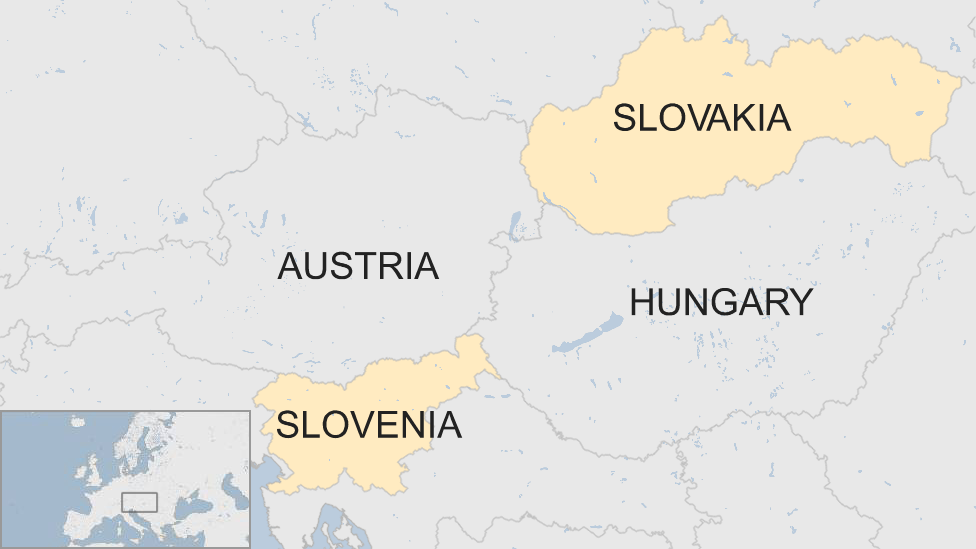
Both countries are former socialist republics, and both emerged in their modern form in the early 1990s.
Slovenia achieved independence from Yugoslavia in 1991, in a relatively bloodless manner after the EU helped to broker a deal.
Slovakia is the larger country and has twice as many people - at 5.5 million people to Slovenia's two million.
It was once part of the state of Czechoslovakia. In 1992, the so-called Velvet Divorce split the country in to Czech Republic and Slovakia.
This history helps to explain the similarity of the flags - both countries use the same colours as Russia and many other Slavic nations, due to their shared history.
But now that you've learned a tiny little bit about these two countries, you can read their country profiles for more information.
And after that, if you're brave enough, you might try tackling this fiendishly difficult quiz on the two put together by Politico, external.
Bonus points if you spotted our deliberate mistake.
- Published5 June 2024
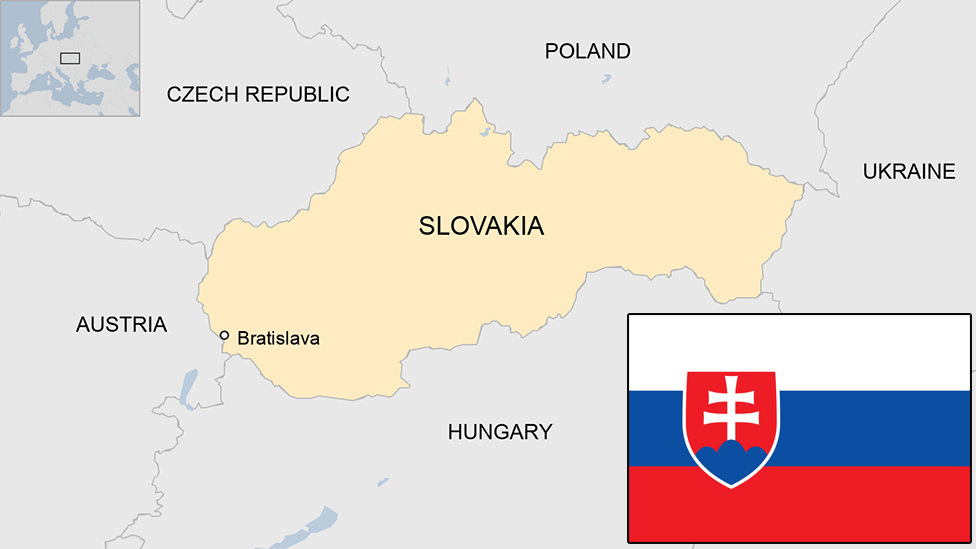
- Published28 June 2023
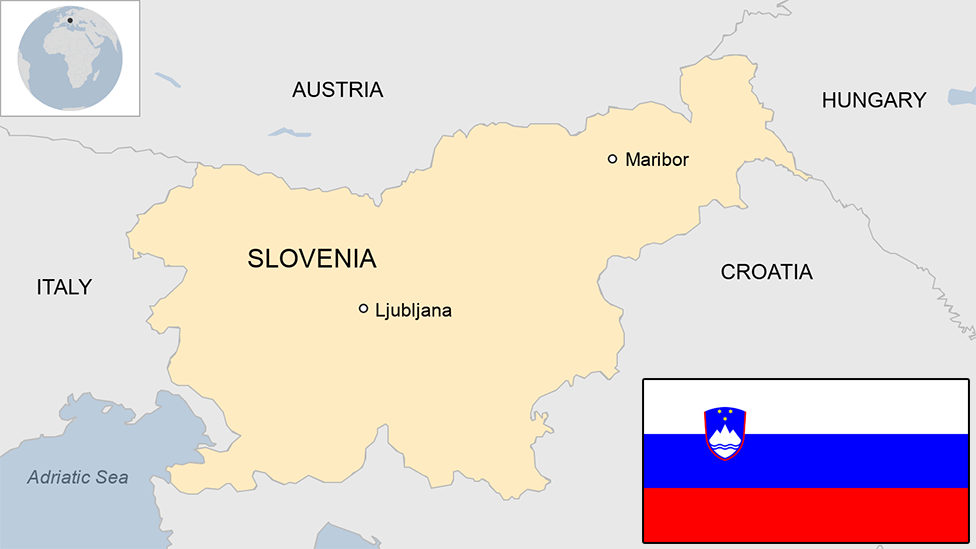
- Published15 March 2018
